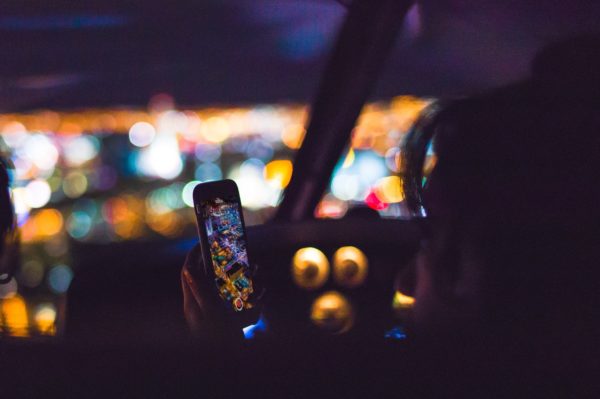Passengers sometimes want to turn on the inside light in your car as you’re driving at night. Maybe they’ve lost something in the footwell, maybe they’re trying to do makeup in the mirror in the sun visor.
While the interior lights are not particularly bright, they cause your pupils to constrict and let less light into your eyes. This reduces your ability to see the finer details in the darkness outside. You’ll still see brighter objects – other cars’ lights, streetlights, etc, but items that are less well lit will blend into the darkness.
Usually when you are driving at night, the only lights you see in the cabin are those on the dashboard, and they are not particularly bright. If you’re running a navigation system, many switch to ‘dark mode’ and display a dark grey background with white writing rather than a white background.

At night your pupils will dilate as much as possible and this gives you the best view of the road ahead. It can take as long as half an hour for your eyes to adjust fully to darkness. A chemical called rhodopsin builds up in the rods on your retina, and it’s extremely sensitive to light. As soon as it’s exposed to light it immediately photobleaches and then you can’t see as well, plus your pupils constrict.

The same thing happens when you look at the headlights of an oncoming vehicle (especially if they have high beam headlights on), which is why it’s best to look at the edge of the road rather than at their lights as it preserves more of your nighttime vision.
If you want to maintain your nighttime vision when you have to look a something bright, you can do the old pirate trick: close one eye. This will reduce your depth perception, though.
So, is it bad to have the interior light on? If the light is over the rear seats, it won’t make much difference to you as the driver. If you’re driving around the city, the amount of ambient light is huge – more than enough to negate the effects of the interior light. However, if you’re driving in the countryside with no streetlights, it will affect your vision outside your vehicle.

Driving with the inside light on also makes you and your passengers more visible to people outside the vehicle; a police officer might pull you over to have a chat in some countries.
